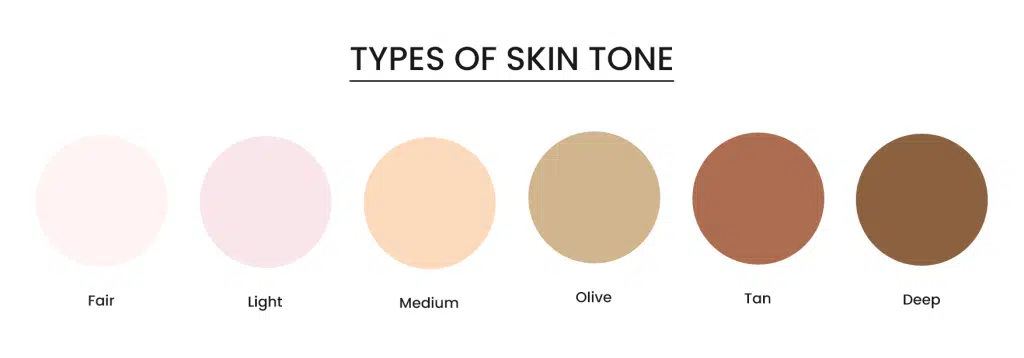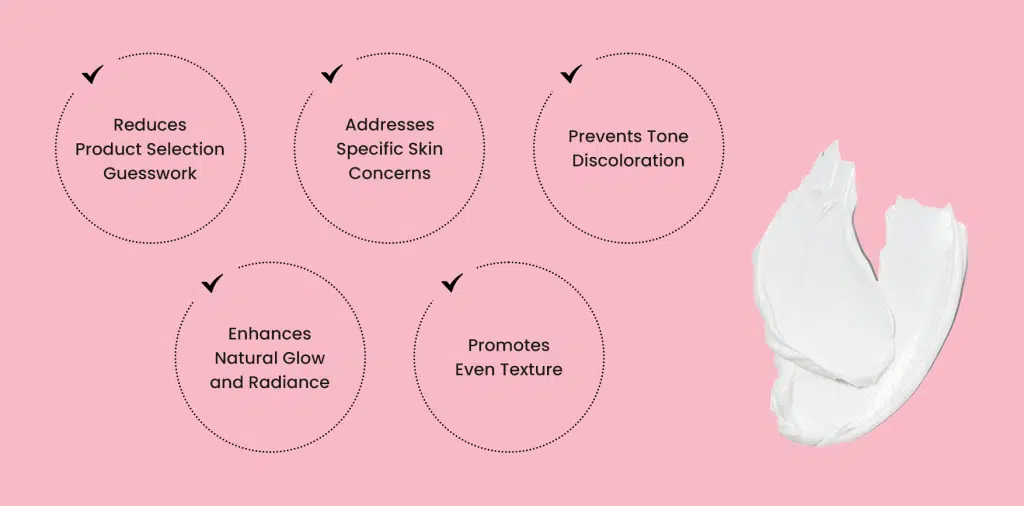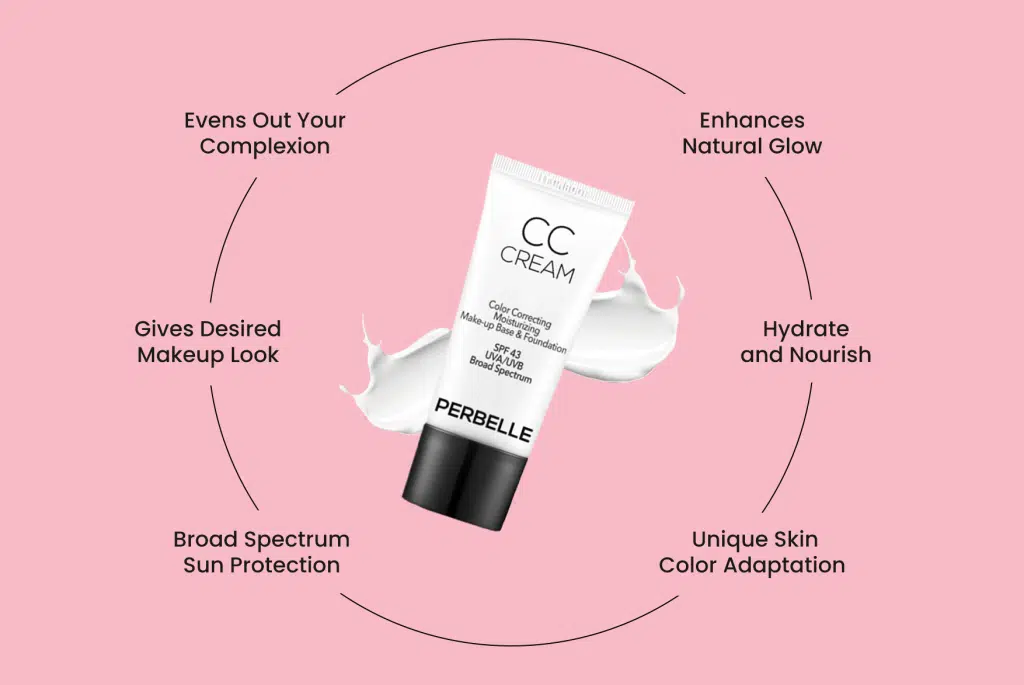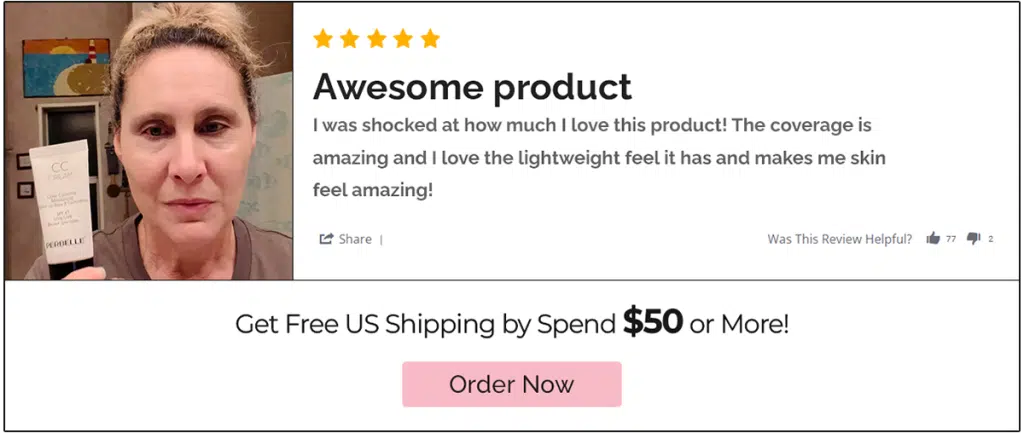
Your skin tone is more than just a body’s upper-layer surface—it’s the foundation of your complexion and plays a key role in determining the skincare and makeup that suit you best.
Hence, understanding your complexion is the first step toward selecting products, like CC cream, that enhance your natural beauty and address specific skin-related concerns. But how can you determine your tint and why it matters?
In this guide, we’ll explore the process of identifying skin color, understanding its nuances, and choosing the correct CC cream to match your tone.
Multiple factors determine your complexion, and pinpointing it requires attention to detail. Here are the essential elements to consider:
Surface Tone: In the mirror, you see your skin’s overall lightness or darkness. Familiar surface tones are fair, medium, olive, and deep.
For instance, think about buying foundation shades labeled as “light,” “tan,” or “dark.” That’s your surface tone.
Undertone: The subtle hue beneath the surface that doesn’t change regardless of your tan or pale appearance. They are warm (yellow, peachy, golden), cool (pink, red, bluish), or neutral (a mix of warm and cool).
For reference, have you ever tried a lipstick that looked perfect in the tube but didn’t suit you? That is because it clashed with your undertone, not your surface tone.
One of the easiest ways how to find your skin tone is by looking at your wrist veins:
How your surface reacts to sunlight is another primary indicator:
Look at your skin in natural light (avoid fluorescent lighting as it can distort colors).
Your preference for certain types of jewelry can also hint at your undertone:
Experiment with different colors to see which ones flatter your tone most:
Testing the foundation on your jawline is one of the most reliable ways of how to find your skin tone and identify your surface tint. You’ve found your match if the shade blends seamlessly without making you look too yellow or pink.
“What is my skin tone” is a crucial question in building a skincare or makeup routine that enhances natural beauty.
Let’s break down the color into types of skin tones and tailor your beauty routine to suit your unique complexion.

Fair
Pale, often with a porcelain-like appearance. This tone tends to burn easily and rarely tans.
Light
Slightly deeper than fair tone but still light. It tans minimally and burns quickly.
Medium
A warm, golden, or olive tone that tans easily with minimal burning.
Olive Edge
A greenish or neutral undertone sets the olive surface apart from other tones. It tans easily but can sometimes look sallow.
Tan
A naturally tanned complexion that deepens with sun exposure. Rarely burns.
Deep
Rich, dark tones that don’t burn quickly and retain a beautiful radiance.
Skincare is not a one-size-fits-all approach. Your surface tint and undertone influence how your skin responds to products, environmental factors, and sunlight.
Using products tailored to your color ensures that your beauty routine effectively enhances natural beauty, addresses concerns, and maintains dermis health.
Here’s why it’s essential to choose skincare and tips for a flawless complexion:

Tailored skincare simplifies your routine by eliminating the need for trial and error. Knowing what works for your tone and type saves time, money, and the frustration of dealing with ineffective products.
Products tailored to your complexion target unique issues like redness, hyperpigmentation, or dullness, ensuring effective and personalized care.
Using the right tone products helps avoid mismatched shades or ashy appearances, maintaining an even complexion without accentuating imperfections.
Tone-appropriate products highlight your undertones, boosting your skin’s natural luminosity and creating a healthy, radiant finish.
Products designed for your tint often include ingredients that reduce discoloration, brighten dull areas, and smooth out texture.
Look for niacinamide in your CC cream to minimize uneven pigmentation across all colors. Hyaluronic acid is ideal for hydration without heaviness, regardless of color.
A CC (color-correcting) cream is more than just a beauty product—it’s a multitasking hero that addresses a wide range of dermis concerns while enhancing natural tone.
Here’s why selecting the right CC cream tailored to your skin makes all the difference:

Its primary role is to correct uneven complexion. Whether you’re dealing with redness, dark spots, or dullness, the pigments in CC cream are designed to neutralize these issues.
For instance, you can skip the multiple layers of concealer and foundation. Instead, this color-correcting cream can achieve a natural, flawless look with just one product.
Not everyone needs full coverage every day. CC cream offers buildable makeup that lets you control how much you want to conceal. For a fair surface, a light application brightens and smooths without overpowering.
CC cream evens discoloration and blends seamlessly into the natural tone for deeper colors, avoiding a grayish cast often seen with mismatched products.
Most CC creams come with built-in SPF, offering essential sun protection. UV rays significantly cause premature aging, skin cancer, and uneven tone, so having SPF in your daily routine is crucial.
Unlike heavy foundations, these are lightweight and blend seamlessly into your first dermis layer, enhancing its natural glow.
It helps to even your surface tone and provides essential hydration and nutrients, leaving it healthy, supple, and glowing throughout the day.
Formulated to match various undertones, CC creams blend seamlessly with your natural complexion, ensuring a flawless finish without looking cakey or mismatched.

Understanding your skin tone is the key to unlocking its natural glow and selecting products that genuinely work for you.
Whether fair, olive, or deep-toned, CC cream is a versatile addition to your routine, offering coverage, hydration, and protection in one simple step.
You can confidently enhance your natural beauty and tackle skin concerns by identifying your complexion and choosing the right product from Perbelle Cosmetics.